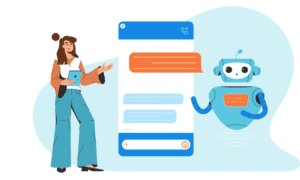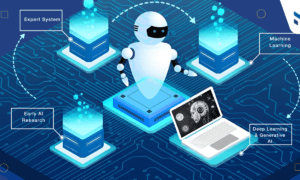Customer centricity has become the new currency of digital commerce. Shoppers expect brands to recognize them, remember them, adapt to their behavior, and deliver consistent experiences — whether they’re browsing on mobile at the airport, comparing prices on desktop, engaging on social media, or walking into a store.
But most enterprise e-commerce teams are still operating on traditional CMS platforms that were never designed for this level of complexity. They were built to manage pages — not to power omnichannel, personalized, AI-ready digital experiences. And that’s where things start to break.
1. Your CMS Still Thinks in Pages — Your Customers Don’t
Traditional CMS platforms were designed around pages, templates, and site maps. That works for internal organization — but not for how customers actually behave.
Real customers don’t browse in straight lines. They jump from a product page to social content, from an email to mobile search, from an app to an in-store interaction. And they expect each touchpoint to feel consistent, relevant, and up-to-date.
A traditional page-centric CMS gets in the way:
- Static content that never adapts to context, so every user sees the same thing regardless of location or behavior
- Duplicate assets spread across teams and markets, creating outdated or conflicting messages
- Difficult-to-maintain GEO variations, causing inconsistencies or missing local relevance
- Slow content cycles, because updating one idea often means rewriting entire pages
The Fix: Move From Pages to Structured Content Assets
Shift to structured, reusable content models that can be dynamically assembled across channels. A headless CMS makes this possible by separating content from presentation, enabling teams to create once and reuse everywhere — across apps, storefronts, social commerce, and in-store displays. This omnichannel approach is the foundation of customer-centric digital experience.
2. Your CMS Can’t Deliver the Personalization Your Customers Expect
McKinsey found that 71% of consumers now expect personalized interactions, yet most brands still deliver one-size-fits-all messaging across channels. The reason isn’t lack of ambition — it’s the CMS.
Traditional systems weren’t built to personalize beyond simple homepage swaps. They’re tightly tied to templates, dependent on IT for changes, and disconnected from real-time customer data. Meaningful personalization, the kind that adapts to behavior, context, and intent in real-time, simply isn’t feasible.
The Fix: A Composable DXP for Real-Time Personalization
Move toward a composable, headless DXP architecture where your CMS becomes part of a flexible, integrated customer experience ecosystem. In this model, the content layer connects smoothly with:
- Customer Data Platforms (CDPs)
- Real-time segmentation and personalization engines
- Journey orchestration tools
- Customer engagement platforms
- A/B and multivariate testing systems
A composable DXP like CoreMedia is built for this setup: its headless CMS delivers structured content and omnichannel delivery, while integrating deeply with enterprise personalization, commerce, and data tools. The result is a flexible, API-first foundation that supports true real-time personalization at enterprise scale — without the bottlenecks of a traditional CMS.
3. Your CMS Can’t Deliver Local Experiences at Global Scale
Customer centricity doesn’t end with personalization — it must extend across borders. And this is where many CMS platforms quickly fall apart.
The moment a brand operates in multiple markets, the weaknesses of a traditional CMS become painfully visible:
- Inconsistent content between countries and regions
- Slow, manual localization cycles that delay campaigns
- Lost or outdated translations, sometimes published for months
- Offers appearing in the wrong GEO, confusing customers
- Fragmented multi-site governance, making global coordination nearly impossible
- Little to no local content adaptation, leading to generic, irrelevant experiences
For global enterprises, this creates a costly cycle. Teams spend enormous time searching for outdated content, re-creating assets from scratch, or manually updating information in dozens of places. The result? Higher operational cost — and a customer experience that feels anything but locally relevant.
The Fix: Build Content Workflows That Scale Across Markets
Modern global teams need more than translation tools. They need:
- Structured localization workflows
- Multi-site orchestration across brands and markets
- Content inheritance with local overrides
- GEO-specific previews and SEO controls
This lets global teams maintain global consistency while giving local teams the flexibility to adapt content, offers, and messaging.
4. Your Content Can’t Compete in an AI-Driven Search World
Customers now research and compare products inside AI tools, smart assistants, generative search engines, and AI-powered browsers. Increasingly, they delegate parts of their decision-making to digital agents.
A shopper might ask:
“Find me a sustainable running shoe under $120 that can be delivered tomorrow.”
The AI evaluates options, checks specs, compares reviews, and suggests a shortlist — long before the customer sees your site.
This shift changes everything:
- AI agents act as gatekeepers between brands and consumers
- Humans and machines make decisions together
- Trust, transparency, and structured content become ranking signals
- The purchase no longer starts on a website — it starts in a conversation
Gartner predicts agentic AI will autonomously resolve 80% of common customer service issues without human intervention by 2029.
The Fix: Prepare Your Content for Humans and Machines
A customer-first experience now requires a CMS that delivers structured, machine-readable content across channels and AI environments. A headless CMS makes this possible: it distributes content through APIs so your brand stays consistent across web, app, social, in-store — and increasingly, inside AI-driven shopping interfaces. In a world where AI agents influence buying decisions, structured content and GEO-ready metadata are essential for visibility.
5. A Slow CMS Means a Slow Experience (and Lost Revenue)
Speed determines whether customers stay or bounce. According to Google:
- 53% of mobile users abandon sites that take longer than 3 seconds to load
- Slow pages dramatically worsen SEO and GEO performance
Traditional CMS platforms load heavy templates, slow page rendering, and outdated frontends — all of which hurt performance. And when your site is slow, nothing else matters: personalization, design, storytelling… all irrelevant if the page never loads.
The Fix: Power Your Frontend With a Headless, Performance-First Setup
Modern frontend frameworks (Next.js, Vue, React), powered by a headless CMS, deliver:
- Faster load times
- Stronger Core Web Vitals
- Better GEO performance
- Higher global SEO rankings
- Consistent experiences across devices
Headless allows you to modernize the customer experience layer without replacing your commerce engine or backend systems.
5 Steps to Build a Customer-First Digital Experience
The good news: Customer centricity isn’t about throwing out your tech stack. It’s about replacing the bottlenecks.
- Use a headless CMS
Give teams the flexibility of APIs with the usability of visual editing, enabling modern experiences without slowing marketers down. - Shift to reusable, structured content
Stop managing one-off pages. Create modular content that can be personalized, localized, and reused across every channel and market. - Connect your CMS to real-time data
Personalization only works when your CMS integrates smoothly with CDPs, CRMs, analytics, and AI-driven decisioning systems. - Balance global consistency with local freedom
Let global teams maintain brand coherence while empowering regional teams to adapt content, offers, and messaging for their market. - Build fast, modern frontends
Speed is the first impression. Use performance-first technologies to deliver fast-loading experiences everywhere.
Final Thoughts: Your Content Strategy Defines Your Customer Experience
Customer centricity isn’t a slogan — it’s a system. And your CMS is either enabling it or silently standing in the way. Legacy platforms were never built for omnichannel journeys, multi-GEO operations, or real-time personalization. A headless CMS within a composable DXP gives modern brands the flexibility and speed to meet customers where they are — and deliver the kind of experiences they genuinely appreciate.
So the question isn’t whether customer centricity matters.
It’s whether your digital stack is actually capable of delivering it.































